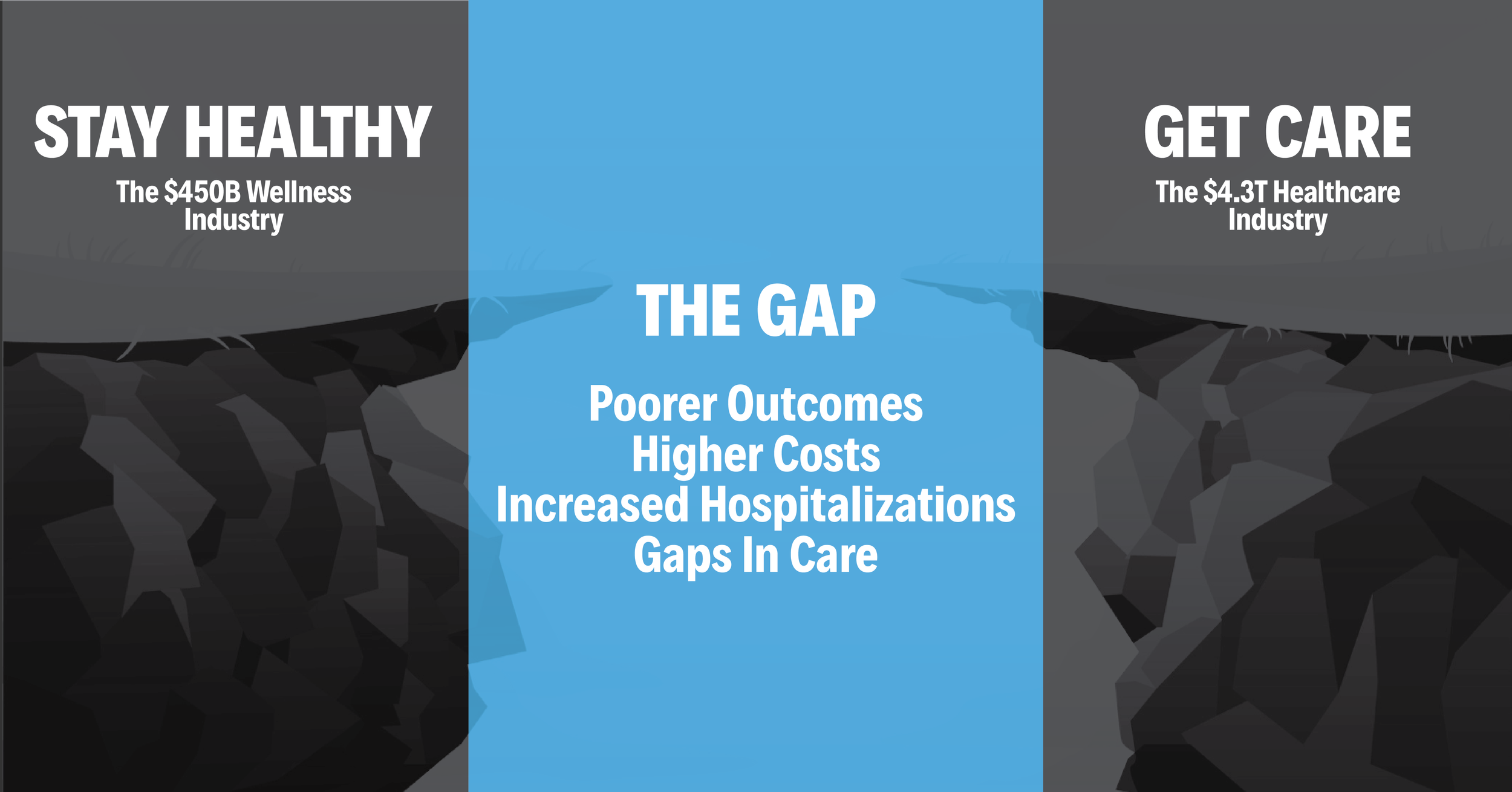Closing Healthcare’s Greatest Gap | Part 1: Defining the Gap
Welcome to Closing Healthcare’s Greatest Gap. In this series of five blogs, we’ll discuss a fundamental cause of American healthcare inefficiency and how health plans can address the problem by replacing today’s fragmented healthcare system with a single-source, connected consumer experience.
Let’s begin by defining our terms. What exactly is “Healthcare’s Greatest Gap”?
Like a gap in care, Healthcare’s Greatest Gap is a discrepancy between the care that is actually provided to patients and the recommended best practices. It is a discontinuity in care.
But unlike any specific gap in care, such as wellness visits or colonoscopy screenings, Healthcare’s Greatest Gap permeates and profoundly impacts the entire healthcare system and every aspect of a member’s health.
Healthcare’s Greatest Gap is the deep structural divide between the two major sectors of healthcare, a divide that literally cuts the healthcare system in two.
Because these two “systems of care” operate, for the most part, in two disconnected silos, there is no ongoing continuum of proactive care, one that provides the support and resources patients need to follow their treatment plan and stay healthy. Once patients are “officially” discharged from the healthcare system, they are mostly left to their own devices to manage their health. It is largely their responsibility to provide the impetus, motivation and encouragement that ensures their follow-up care is effective.
So, what are the ramifications of this system-wide discontinuity of care?
Quick Answer: It makes healthcare profoundly inefficient and, as a result, inordinately expensive.
Acquiring and maintaining good health is a proactive and ongoing process (Staying Healthy). But the American healthcare system delivers care that is primarily reactive and episodic (Getting Care). Indeed, each of these two “systems of care” operate with their own mission, time frame, focus and method.
Simply put, these two systems of care work against each other. And when a system, any business system, has different components that continue to work at cross purposes, the inevitable result is inefficiency. No wonder the American healthcare system is the world’s most expensive among high-income nations.
In our next blog in this series, we'll take a closer look at the high costs caused by a structurally fragmented healthcare system.
Discover how Pager can help your health plan lower costs and improve care by ending healthcare fragmentation. Click here for our latest publication, Closing Healthcare's Greatest Gap: Replacing Today's Fragmented Healthcare System with a Single-Source, Connected Consumer Experience.


